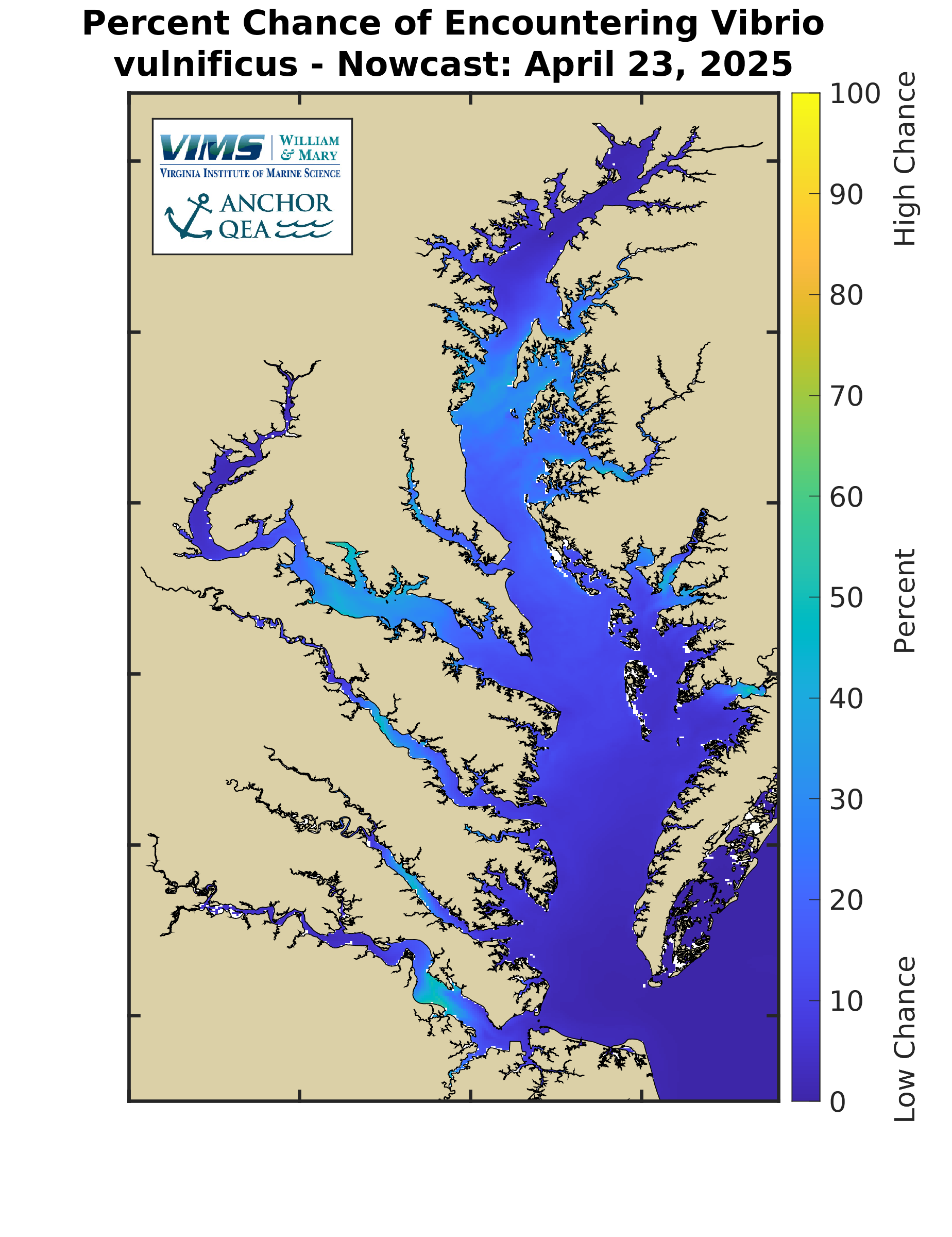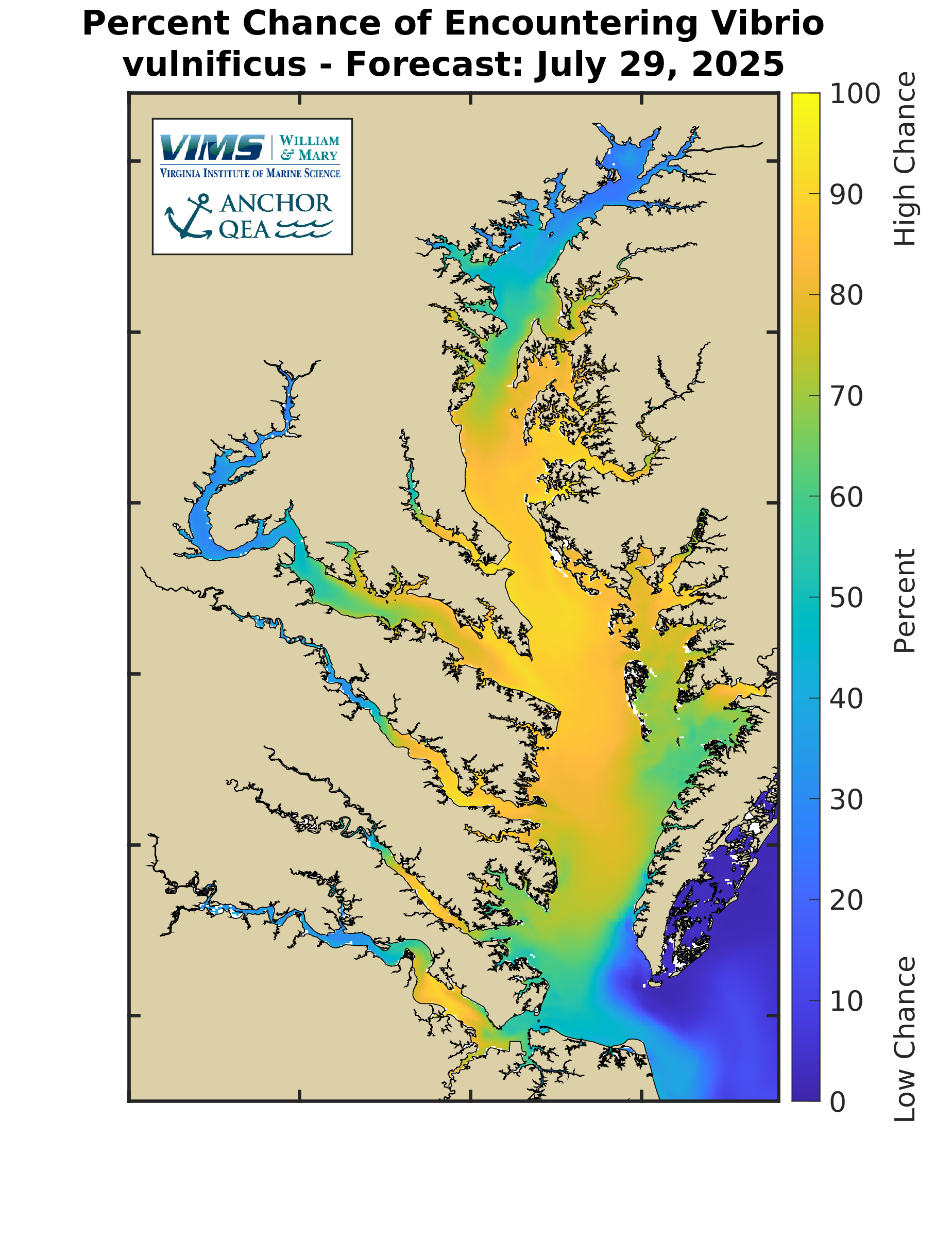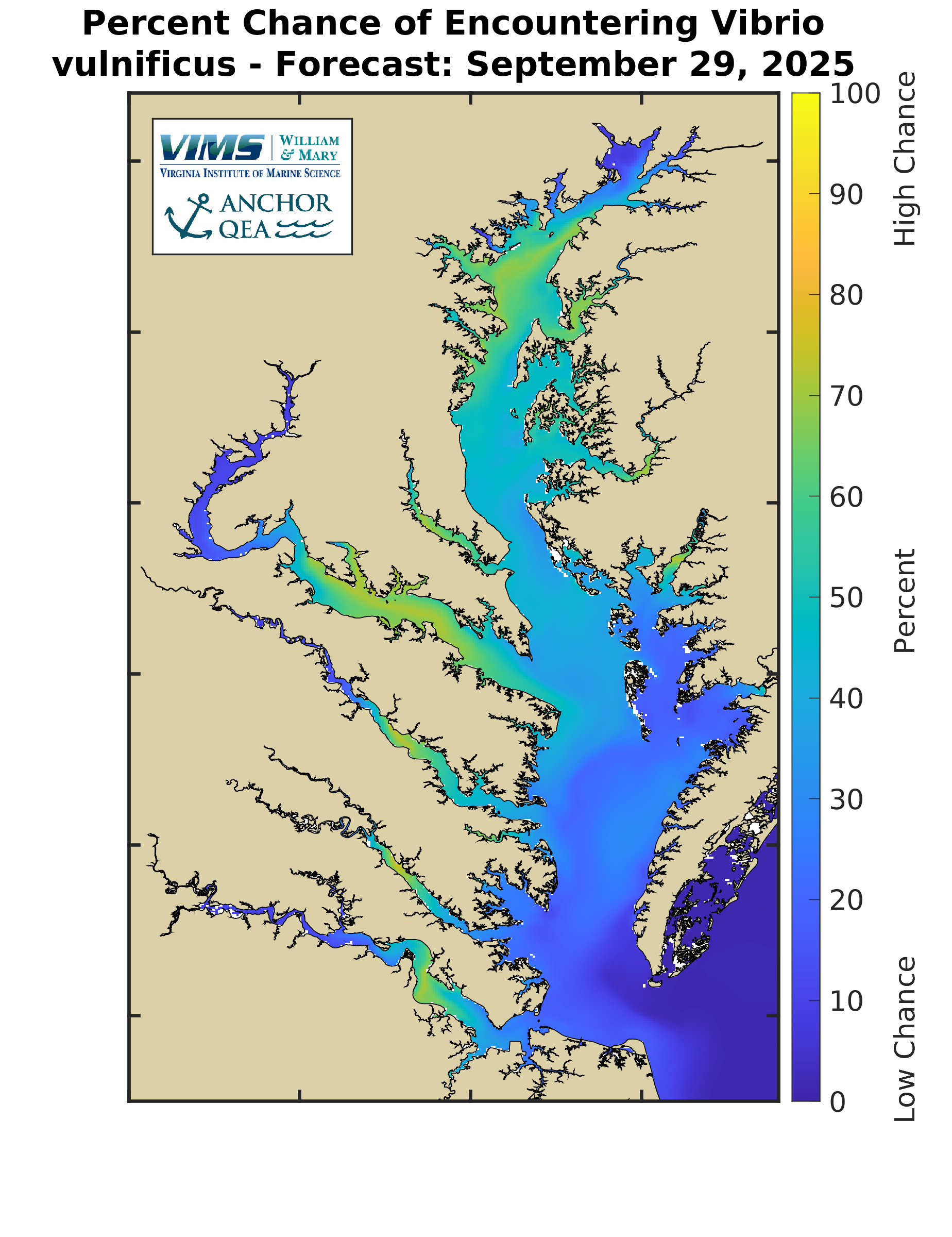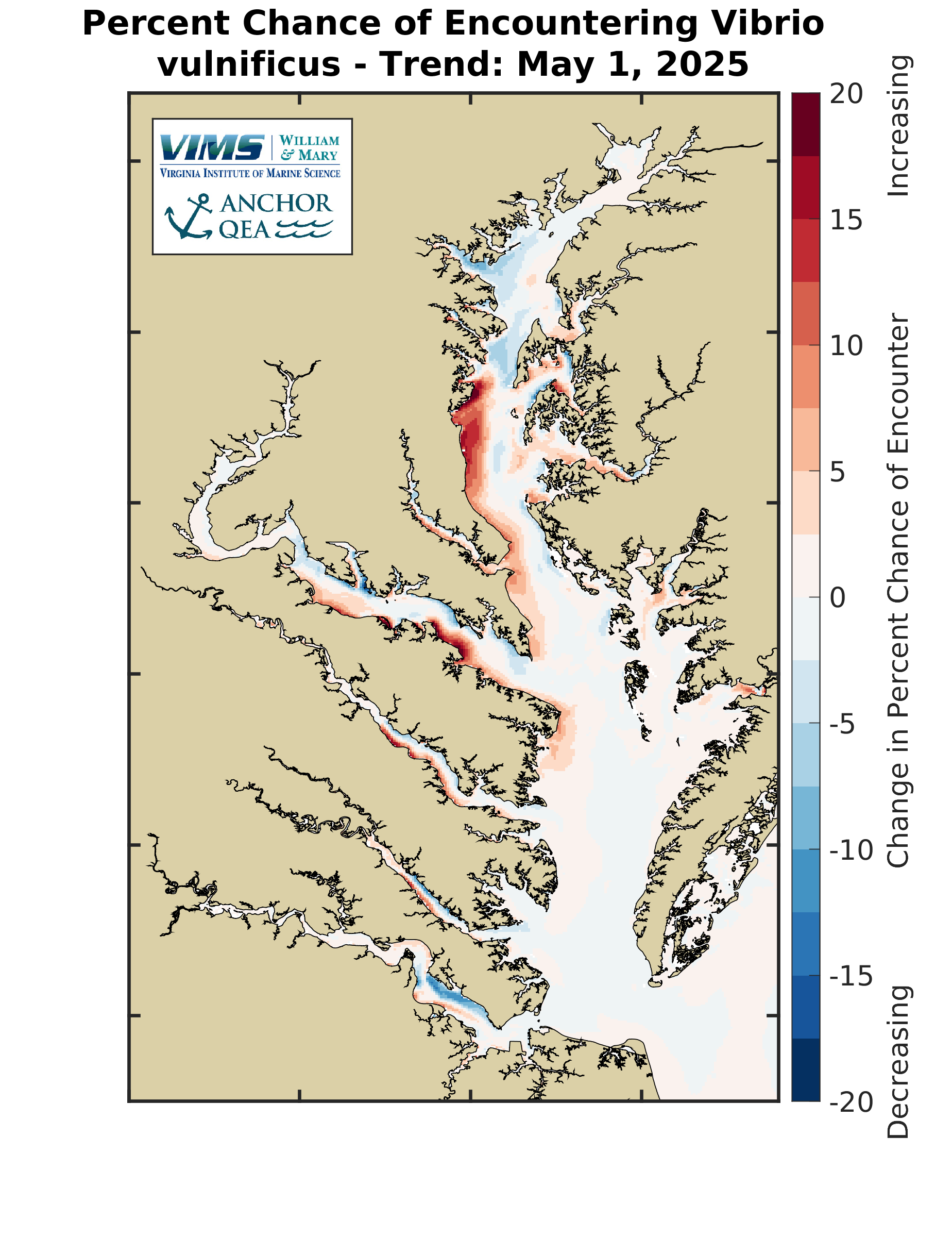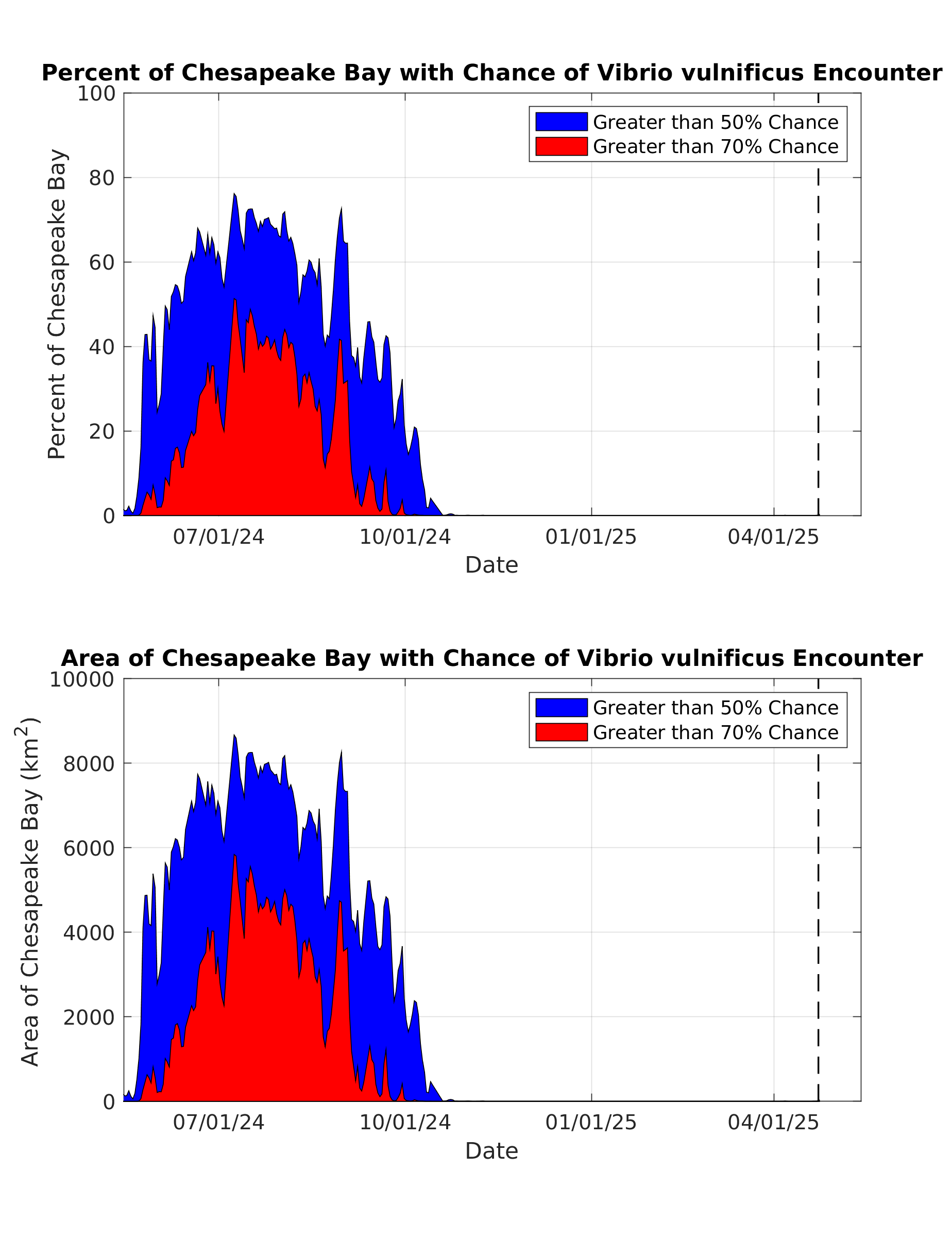Pathogens (EXPERIMENTAL)
SummaryThis DRAFT and EXPERIMENTAL webpage is focused on pathogens in the Chesapeake Bay and is part of an ongoing multiple-year research project. This webpage will be periodically updated. Please use this version of the webpage and forecasts for informational purposes only. Various naturally occurring pathogens inhabit the Chesapeake Bay and can have adverse impacts on the environment and human health. One of these pathogens is the bacteria Vibrio. Although relatively uncommon, people can become infected with Vibrio by eating contaminated food or by swimming in contaminated waters. |
Vibrio CalculationsVibrio vulnificus (Vv) is a naturally occurring infectious bacteria that occurs in the Chesapeake Bay when the conditions are right. Even though cases are rare, Vv can cause sickness through simply swimming in Bay waters. CBEFS forecasts the probability of encountering Vv throughout the Chesapeake Bay and the coastal area of the Eastern Shore. The calculations of the probability of encountering Vv are based on Jacobs et al. (2010, 2014), using salinity and water temperature. Because both salinity and water temperature are forecast by CBEFS, the daily CBEFS forecasts of surface salinity and water temperature are used to calculate the probability of encountering Vv. The forecasts are provided as maps of the percent chance of encountering Vv and as line plots through time of the area of Chesapeake Bay with both a greater than 50% chance and greater than a 75% chance of encountering Vv. Jacobs et al. 2010. Predicting the Distribution of Vibrio vulnificus in Chesapeake Bay. NOAA TECHNICAL MEMORANDUM NOS NCCOS 112 Jacobs et al. 2014. Modeling and forecasting the distribution of Vibrio vulnificus in Chesapeake Bay. Journal of Applied Microbiology 117, 1312-1327 |
Vibrio vulnificus Forecast
|


